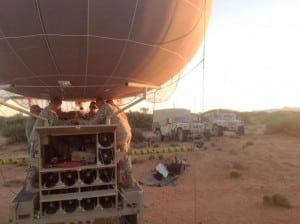
Drone Aviation Holding Corp.’s Drone Aviation Corp. (DAC) said Wednesday aerostat systems successfully completed operations in the Army's Network Integration Experiment NIE 14.2 at Fort Bliss, Texas and White Sands Missile Range, N.M. “It enabled the exercise across the board,” Felicia Hess, president and CEO of Drone Aviation Corp., told Defense Daily. The company now awaits further action by the Army. The Army Brigade Modernization Command (BMC) requested that the two Winch Aerostat Small Platforms (WASP) return to NIE 14.2 as a carryover system following their…













